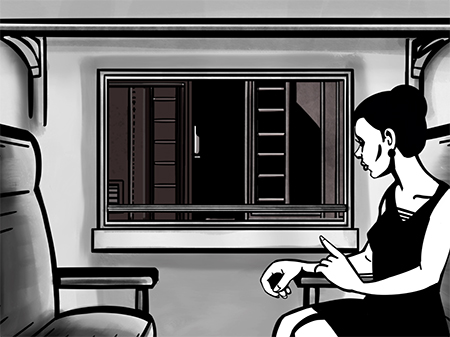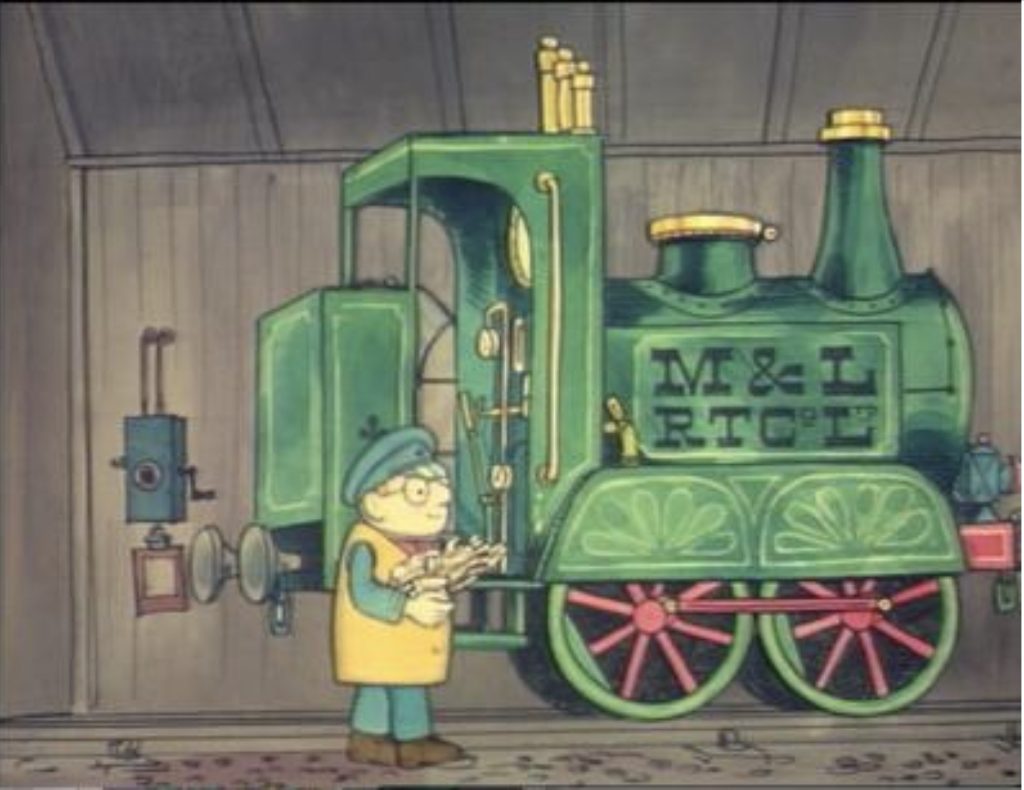While the Lumi�re brothers� film L�Arriv�e d�un train en gare de La Ciotat (1896) enshrined the image of trains in film history, trains may also have played an essential role in the history of psychology and the scientific study...
While the Lumi�re brothers� film L�Arriv�e d�un train en gare de La Ciotat (1896) enshrined the image of trains in film history, trains may also have played an essential role in the history of psychology and the scientific study of apparent motion. For it was a train ride, according to a potentially apocryphal story (Goldstein & Cacciamani, 2022; Hergenhahn, 2008), that inspired German psychologist Max Wertheimer (2012 [1912]) to perform the first systematic studies of apparent motion and to publish his monograph, which marked the founding of Gestalt psychology (Steinman et al., 2000). Apparent motion is the scientific term for animated motion, and as we shall demonstrate, trains and other vehicles may also illustrate induced motion that is one of animation�s fundamental illusions.
Induced Motion. In the words of Colman (2015), induced motion is: �any illusion of movement of a stationary object caused by movement of its background or surrounding context� (p.�373). Schwartz and Krantz (2023) emphasize how this phenomenon usually occurs when a large moving object surrounds a small stationary object, which I have illustrated in the moon illusion (see figure�1), whereby the moon seems to move while it is really the clouds in front of it that are in motion.
Induced motion can generate in the observer a sense of self-movement known as vection (Kooijman et al. 2023). An example of vection is the train illusion, as explained by Duncker (2013 [1938], p.�161): �[w]hen sitting in a railway coach and a nearby train moves, it appears as if one�s own train is moving in the opposite direction; this is a case of induced motion.� Figure�2 and the accompanying video illustrate induced motion, which is a result of the visual system employing a bag of tricks and general rules, which are called heuristics, to help the visual system in our brain perceive quickly (Ramachandran & Anstis, 1986). One of these heuristics is that certain objects in our environment, such as the ground, the trees, and the mountains, are static, while other things, such as living creatures, can move. This heuristic can be tricked and lead to a false percept when we only see a small portion of the world through a narrow opening, such as a bus or train window. When we see a large object, such as the train next to ours, start to move through the window, the heuristic that states that our environment is immobile, rejects the possibility that the world is moving. Instead, the visual system in our brain interprets the information as a sign that we are moving. Warren (1976) uses the term egomotion to describe the sense of moving in regard to our environment. As Warren argues, egomotion can be either active or passive. When the observer physically moves his or her body through space, such as when walking, running, jumping, or diving, the egomotion is active. Whereas when we are in a vehicle such as a train, our egomotion is passive because we perceive the environment move around us. Nevertheless, from our subjective point of view, we feel as if we remain still.
Furthermore, when the feeling of displacement is an illusion, Gibson (2015 [1986]) defines the passive phenomenon as induced ego movement. The production of video games and virtual reality rely on induced ego movementto give the user the impression that they are moving through an environment. For instance, the motion we experience in computer games while driving a racing car or swinging through New York�s buildings in Marvel�s Spider-Man (2018) is thus due to?induced ego movement.
Walk Cycles. Finally, induced motion is an illusion exploited in animated films. By moving the scenery behind an animated character that is walking in place, it is the character who seems to move and not the background because, as in the train illusion, the perceptual system rejects the possibility that the environment is moving. We have the impression of tracking the character�s movement as if we were following him while sitting in a vehicle or with the camera mounted on a cart (Beckerman, 2003). The dolly shot in live-action films produces the same effect (Gibson, 2015 [1986]). Since the movement of the environment in one direction creates the illusion of the character moving in the other direction, the scenery must be moved from right to left if we instead want to create a scene where a character walks from left to right. The illusion is so convincing that it is unnecessary to animate the legs if they do not appear in the shot. Sometimes it is enough to animate the vertical movement of the body so that it matches the swinging movements of the arms. Figure�3 illustrates the movement of the background, and the accompanying video reveals the artifice created by induced motion.
Trains and vehicles may carry us through life, but they are much more than modes of transportation. Regardless of whether our movements are real or illusory, they can lead scientists to new vistas of the mind and may drive artists to understand the underlying principles of their art better.
References
Beckerman, H. (2003). Animation: The Whole Story. Allworth Press.
Colman, A. M. (2015). A Dictionary of Psychology (Fourth ed.). Oxford University Press, USA.
Duncker, K. (2013 [1938]). Induced Motion. In W.�D.�Ellis (Ed.), A Source Book of Gestalt Psychology (pp. 161-172). Routledge and Kegan Paul LTD.
Gibson, J. J. (2015 [1986]). The Ecological Approach to Visual Perception (Classic Edition). Psychology Press: Taylor Francis.
Goldstein, E. B., & Cacciamani, L. (2022). Sensation and Perception (11th ed.). Cengage Learning Inc.
Hergenhahn, B. R. (2008). An Introduction to the History of Psychology (Sixth ed.). Wadsworth.
Kooijman, L., Asadi, H., Mohamed, S., & Nahavandi, S. (2023). A virtual reality study investigating the train illusion. Royal Society Open Science, 10(4), 221622. https://doi.org/doi:10.1098/rsos.221622
Lumi�re, L. (1896). L�Arriv�e d�un train en gare de La Ciotat [Film]. S. Lumi�re; Soci�t� Lumi�re.
Marvel�s Spider-Man (Sony PlayStation 4) [Video game]. (2018). In: Insomniac Games.
Ramachandran, V. S., & Anstis, S. M. (1986). The Perception of Apparent Motion. Scientific American, 254(6), 102-109. http://www.jstor.org/stable/24975978
Schwartz, B. L., & Krantz, J. H. (2023). Sensation and Perception Interactive Edition (Third ed.). SAGE Publications.
Steinman, R. M., Pizlo, Z., & Pizlo, F. J. (2000). Phi is not beta, and why Wertheimer�s discovery launched the Gestalt revolution. Vision Research, 40(17), 2257-2264. https://doi.org/10.1016/S0042-6989(00)00086-9
Warren, R. (1976). The perception of egomotion. Journal of experimental psychology: human perception and performance, 2(3), 448-456. https://doi.org/10.1037//0096-1523.2.3.448
Wertheimer, M. (2012 [1912]). Experimental Studies on Seeing Motion (K.�W.�Watkins & M. Wertheimer, Trans.). In L. Spillmann (Ed.), (pp. 1-91). MIT Press
Philippe Vaucher is a Montr�al-based animator, filmmaker and professor. By uncovering the cognitive roots of Disney animator Ollie Johnston and Frank Thomas� twelve principles of animation, he hopes to better understand the art form he loves. Throughout his film career, he has experimented with various animation techniques and has sought to combine traditional media with digital practices. His independent creations include short films and music videos. His last film, The Well (2013), has won two international awards. He currently teaches animation, cinema and storyboarding at the Universit� du Qu�bec en Abitibi-T�miscamingue�s Montr�al campus.















